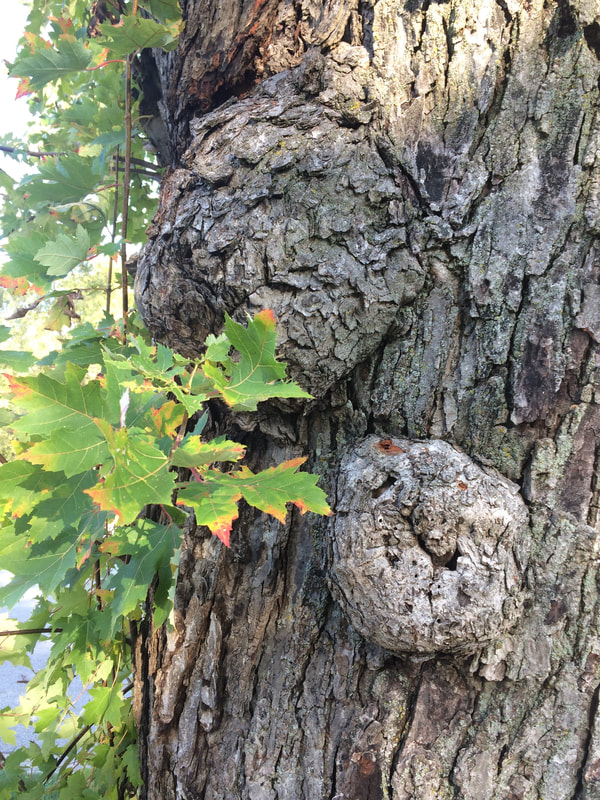|
Photo and story by Donna Iverson
I don't know why I find tree burls so fascinating. Partly, it's because I admire the trees ability to heal itself. And not only that, to make something beautiful out of the injury. The wood inside the burl is swirled, beautiful and rare. Many of these burls are decades old and grow each year that the tree is alive. While you may not immediately see the beauty in a tree burl, pretty much any woodturner does. They covet tree burls, transforming them into one of a kind bowls that can sell for hundreds of dollars. And they have been doing it since colonial times. My first introduction to these exquisite one-of-a-kind burl bowls was at the Shelburne Museum in Vermont which displays these two-hundred-year old wooden treasures alongside handmade quilts, blacksmith art, and pewter cups. Burl is also used to make furniture, guitars and even watches. Burls are most commonly found on maples, walnut trees, oak and cherry. But burls can grow on any kind of tree that has been subjected to some kind of stress, such as injury, virus, fungus, insect infestation or mold growth. Once a burl forms, it takes 30 to 40 years to get to a size where it can be transformed into a man-made work of art. The grain of the burl can be compared to a ball of yarn. It’s as though the tree’s cells went haywire and decided to tie themselves into a knot, according to Kevin Smith, a plant physiologist with the U.S. Forest Service. Because burls wood is so valuable, a pouchier industry has developed with chain-saw welding thieves harvesting burls in our national forests. The redwood forests out west are especially attractive to burl thieves, as these burls can be several feet in diameter. It has gotten to the point that rangers have positioned cameras to catch these thieves. While wood artisans and poachers are known to take a chainsaw and cut the burl off the trees, ecologists recommend against it. The burls contribute to the forests ecosystem of growth and regeneration. And if the tree is in your yard, cutting the burl off will kill the tree. So best wait until the tree dies or has to be removed to get your hands on one. So next time you are out and about and spot one of these surprise treasures still attached to the tree, stop to admire its beauty growing out of deformity. Burls stand as testament to an old time craft that modern technology can not replicate or mass produce.
2 Comments
Ginger Austin
11/3/2019 08:29:46 am
I have a Mango burl bowl that I carved in Florida that was so hard it busted many of my tools, but I think it is beautiful. I'd love to show it to you sometime. Thanks for writing about it. Ginger
Reply
Brenda Huckins Bonter
11/6/2019 09:55:29 am
I love the burls, I have a whole series of drawings, some made into woodcut prints that include burls that make faces, I call them tree spirits, thanks for the article!!
Reply
Your comment will be posted after it is approved.
Leave a Reply. |
Archives
April 2024
Categories |

 RSS Feed
RSS Feed